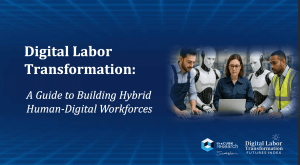AWS’s Build on Trainium program is a $110 million investment by AWS in university-led AI research and represents a strategic move that could significantly impact the future of AI development. This initiative isn’t just about throwing money at academic institutions –— it’s a carefully crafted program that addresses several critical challenges in the AI landscape while positioning AWS for future growth.
AWS’s Build on Trainium Program
AWS’s Build on Trainium program is designed to provide university researchers focused on generative AI with the tools they need to innovate more rapidly, including extending free compute hours to build AI architectures and optimize performance for AI accelerators working on complex computational tasks, as well as to build new ML libraries.
AWS Trainium is the ML chip built by AWS for deep learning training and inference, and in developing the Build on Trainium program, the company created a Trainium research UltraCluster with up to 40,000 Trainium chips, purpose-built for the computational structures and unique workloads of AI.
The initiative has been developed to serve a broad range of AI research and, in tandem with this move by AWS, it’s great to see that research institutions are also committing to dedicated funding for new AI-focused research initiatives and developing and launching student education programs.
AWS has also indicated the company will engage in several rounds of calls for proposals for the Amazon Research Awards program, with the ‘winners’ getting the benefit of access to those Trainium UltraClusters to power their research, along with receiving AWS Trainium credits.
AWS’s Build on Trainium Program is Designed to Democratize Access
What makes AWS’s Build on Trainium investment particularly noteworthy is its focus on democratizing access to high-performance computing resources for AI research. Tracking the evolution of the AI industry, I’ve seen how computing constraints often become the bottleneck for innovative research, especially in academic settings. That’s what AWS is working to solve for here. By providing access to up to 40,000 Trainium chips in its UltraCluster configuration, AWS is effectively removing one of the biggest barriers to breakthrough AI research.
The program’s structure reveals AWS’s sophisticated understanding of the AI ecosystem’s needs. Rather than simply providing compute credits, AWS is offering a comprehensive package that includes access to purpose-built Trainium chips, technical education, and community support through its Neuron Data Science community. This holistic approach suggests AWS is thinking beyond immediate research outcomes and investing in building a sustainable AI innovation pipeline.
Open Source is Key
The open source requirement for research outcomes that is an integral part of AWS’s Build on Trainium initiative is particularly intriguing. While this might seem counterintuitive for a commercial entity, it’s actually a shrewd move. By ensuring that advances created through this program are openly available, AWS is positioning itself at the center of a growing ecosystem of AI innovation. This approach could help establish AWS Trainium as a standard platform for AI research and development, potentially leading to increased adoption of their commercial services in the long run. We are seeing more and more embracing of open source development in the tech ecosystem and this move by AWS does not surprise me at all.
The Neuron Kernel Interface Will Help Facilitate Boundary Pushing
The introduction of the Neuron Kernel Interface (NKI), currently in beta, is another strategic element that shouldn’t be overlooked. By providing low-level access to its hardware architecture, AWS is enabling researchers to push the boundaries of what’s possible with its technology. This level of flexibility is exciting and could lead to unexpected innovations in AI processing efficiency and novel applications that might not have been possible with more restricted access.
A True Research Driven Initiative, Not Marketing Messaging
In some instances, vendors embrace initiatives that are as much of a marketing initiative as anything else, hoping to garner headlines and attention as a result. This move by AWS is different and represents a significant commitment to the university-led research community, removing many of the roadblocks and challenges they face, the biggest of which is cost, and committing to a common goal of spurring innovation as well as working to train the next gen of AI talent.
Early endorsements from prestigious institutions like Carnegie Mellon University and UC Berkeley lend significant credibility to the program. When respected researchers like Todd C. Mowry and Christopher Fletcher express enthusiasm about the platform’s capabilities, it signals to the broader academic community that this is a serious research tool, not just a marketing initiative.
Focus on the Future: This Investment Also Benefits AWS
The real value of this investment may lie in its timing. AWS is endeavoring to position itself as a leader in all things AI in what is a very, very competitive space. As AI development increasingly becomes a critical factor in national competitiveness and economic growth, AWS’s move to strengthen its relationships with academic institutions is strategic and could help secure its position as a key player in the AI infrastructure landscape for years to come.
The focus on training future AI experts through this program is particularly forward-thinking. As the industry grapples with a shortage of AI talent, AWS is effectively creating a pipeline of researchers and developers who will be familiar with the AWS technology stack. It doesn’t take a crystal ball to see that this could give AWS a significant advantage in the increasingly competitive market for AI talent.
Looking ahead, AWS’s Build on Trainium investment could catalyze a new wave of AI innovation, particularly in areas that have been constrained by computing resources. The combination of purpose-built hardware, flexible programming interfaces, and substantial computing power could enable breakthroughs in model architecture, optimization techniques, and distributed systems research that might otherwise have remained theoretical.
Image credit: Pexels, Mikhail Nilov
See more of my coverage here:
Autonomous AI Agents: Microsoft’s Bold Vision, an AI OS for Enterprises
Amazon’s AI Shopping Guides Signal Shift in Ecommerce Search Paradigm
Tracer’s Agentic AI Aims to Revolutionize Brand Protection: A Game-Changer in Digital Security



